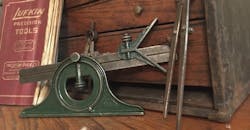It is a year of looking forward and backward at IndustryWeek. Looking forward because manufacturing—and manufacturers—must always keep their eyes peeled on what’s ahead in a world that grows ever more complicated. It’s all about the future. And if manufacturing is there or going there, so, too, are we at IndustryWeek.
But looking back is important, as well. History can influence the present, and it provides lessons we shouldn’t forget as we forge ahead. It also provides an opportunity to look back on where we were and be alternately amazed, disbelieving or simply intrigued.
For us, 2020 is the 50th anniversary of when we adopted the IndustryWeek name, although our tie with manufacturing extends much further back. In the first quarter of this year we also will name our 2019 IndustryWeek Best Plants Award winners. They will be our 30th class of honorees, so yet another milestone will be reached in 2020.
It’s a notable year for us, so we will be doing plenty of looking back and forging ahead.
With those thoughts in mind I took a small leap into my family’s manufacturing past last week. If you follow me at all, you know my forays into the past are not so unusual. For more than 15 years now, I’ve been saluting century young (as I like to call them) U.S. manufacturing companies in an ongoing series of online presentations. If you haven’t seen one of these, go to www.industryweek.com and search for The Definition of Durability: 10 Manufacturing Companies That Have Reached the Century Mark. That’s the latest one we’ve published, but it won’t be the last.
I’m endlessly intrigued by the past and how it’s gotten us to where we are today.
Given that intrigue, I dug deep into one of my closets recently and unearthed my great uncle’s portable tool chest. I don’t know exactly how he made a living, but I do know it was in manufacturing. He was already well retired by the time we held any real conversations, and my interest in his manufacturing background then was nil.
I discovered his tool chest when he died and the family cleared out his house. What entranced me initially was not history, it was the beautiful quarter-sawn oak that fronted the box. It seemed entirely out of keeping with the prosaic purpose of the item: holding tools.
Despite the pretty outside, it was a working man’s tool chest. I started pulling out drawers and quickly discovered a much-thumbed-through “Catalog No. 7” from the Lufkin Rule Co., Precision Tools Division. The briefest of research shows that this catalog dates from the late 1940s.
I also discovered the company was founded—or so Wikipedia tells me—by American Civil War veteran Edward Taylor Lufkin in Cleveland, Ohio. I’m a Clevelander and so was my great uncle upon his arrival from Poland, so the local tie gave me a kick.
The green felt that once covered the bottom of each drawer in the tool chest is now blackened with time and dirt, but I did discover a small treasure trove of my uncle’s tools of precision: inside and outside calipers, a variety of gages, combination squares and several items I can’t identify.
Many of those tools remain familiar 70 years on, albeit augmented now by automation and supported by software in many cases.
Today’s manufacturing landscape is increasingly boosted by digital advances, and I’ll be writing more about it as the year unfolds. But this foray through my uncle’s toolbox also has me sharing a sentiment similar to one of my Twitter followers, who wrote, “I often wonder how our definition of craftsmanship has/will change as we become more automated. There’s something to be said about the technical skill it took to know how to use these tools.”
Perhaps I’ll write about that, too.
About the Author
Jill Jusko
Bio: Jill Jusko is executive editor for IndustryWeek. She has been writing about manufacturing operations leadership for more than 20 years. Her coverage spotlights companies that are in pursuit of world-class results in quality, productivity, cost and other benchmarks by implementing the latest continuous improvement and lean/Six-Sigma strategies. Jill also coordinates IndustryWeek’s Best Plants Awards Program, which annually salutes the leading manufacturing facilities in North America.
Have a story idea? Send it to [email protected].

